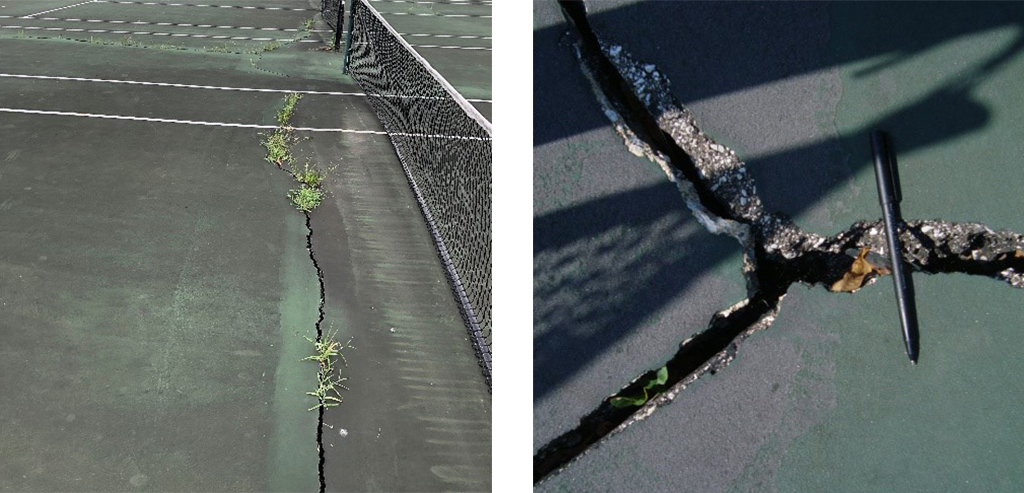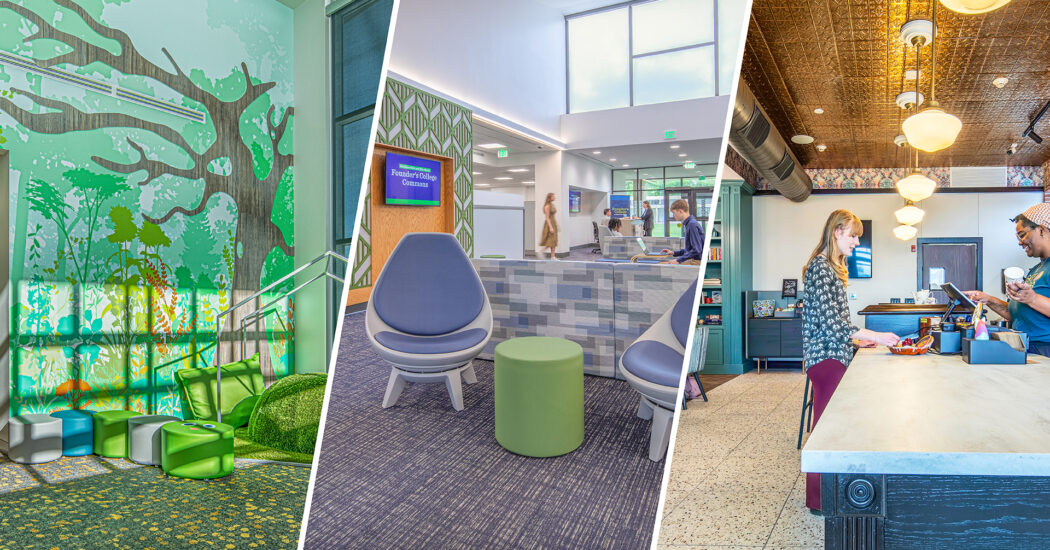What You Need to Know About Post-Tension Concrete Tennis Courts
-
Category
Studio-K12, Studio-Higher Ed, Innovation -
Posted By
Bob Ross -
Posted On
Feb 15, 2021
When we conduct facility condition assessments, we frequently find heavily worn and cracked tennis courts. If you have asphalt courts, you likely know that a fact of life is significant court repair or replacement every decade or so.

Cracked Asphalt Tennis Courts
But it doesn’t have to be this way. There is an alternative: post-tension concrete.
Post-tension concrete tennis courts are just taking off in some Midwest states, and you may have questions about them. I’ll answer some common ones below.
What is a post-tension concrete tennis court?
A post-tension (PT) concrete tennis court is named after the process used to construct it. Concrete is poured over cables or tendons that extend from one end of the court to the other. These cables are mechanically tightened, slowly, as the concrete hardens. This process creates tension loads within the concrete, preventing the large cracks that eventually occur in asphalt tennis courts.
Why consider post-tension concrete courts?
The primary benefit of PT courts over traditional asphalt courts is longevity. If you’re lucky, an asphalt court will last about 10 years. PT courts, on the other hand, will last about 25 years or more.
It is important to note that any hard surface court—whether asphalt or PT concrete—will still need to be resurfaced about every five years. Any cracks that occur in asphalt courts must be repaired before resurfacing. This is added cost and time each time you resurface, which is eliminated with PT concrete courts.
Is there a cost difference between post-tension concrete and asphalt courts?
Right now, upfront cost to build a PT court is about 1.5 times that of an asphalt court, but this can vary with the number of courts you need and other factors. Given that PT courts last more than twice as long as asphalt courts, you will see a considerable return on that initial investment by avoiding court replacement.
PT concrete courts can also be constructed over top of existing courts, which can reduce cost by avoiding court removal.
What are other benefits of this type of court?
The durability and lifespan of PT concrete not only means capitalizing on your investment and reducing ongoing maintenance costs, but it also means less down time caused by repairs.
Because the concrete is held together with tendons, PT courts are more durable than asphalt or other types of courts. This makes them a better choice if there are drainage issues or unsuitable soil in the location you want to build courts.
Where can I see an example of a post-tension court?
I’m glad you asked! We worked with PCC Sports to install PT concrete courts at Lebanon High School in Lebanon, Ind. Watch the video below to get a glimpse at the construction process and the end result.
Learn more here: Lebanon Post Tension Tennis Courts
If you would like to talk about the possibility of post-tension concrete tennis courts for your school or other organization, or if you’d like to schedule a site visit to see these types of courts in action, reach out to me!







